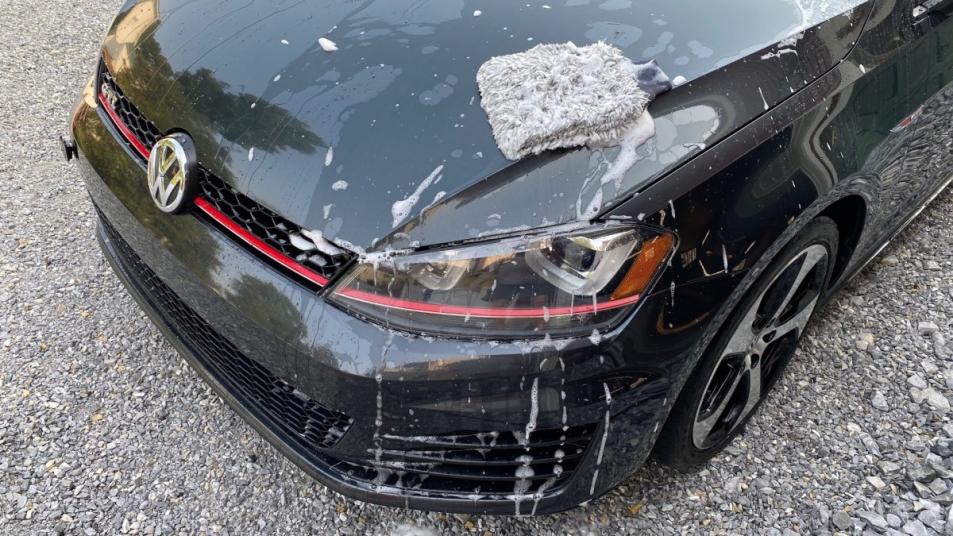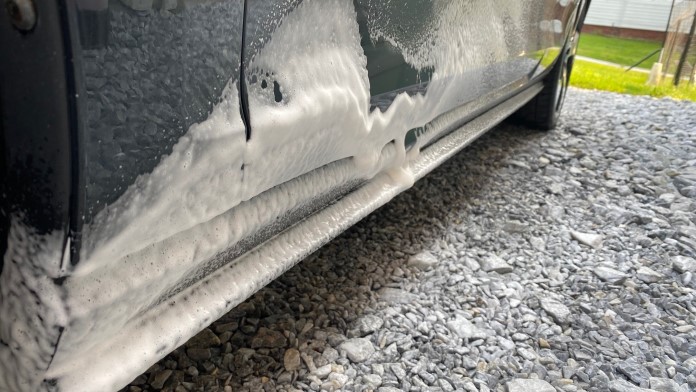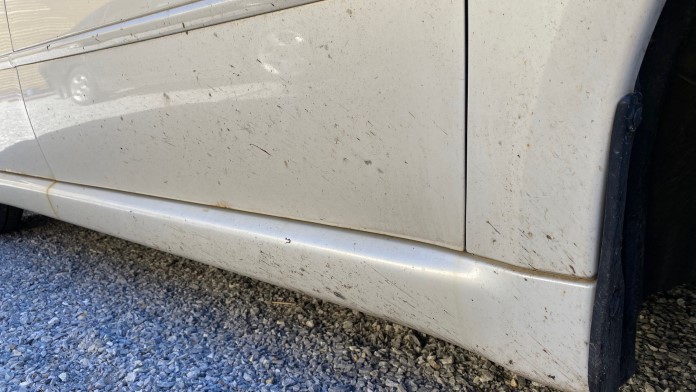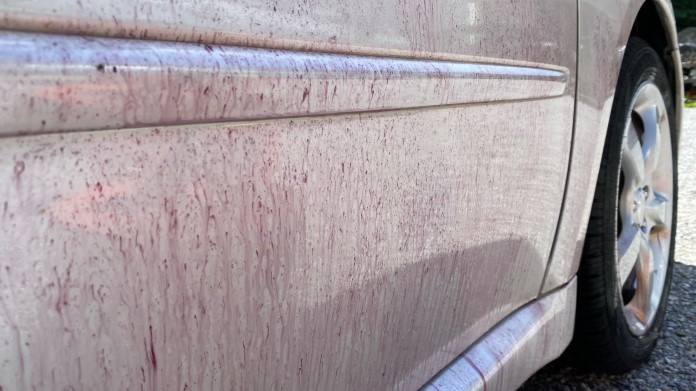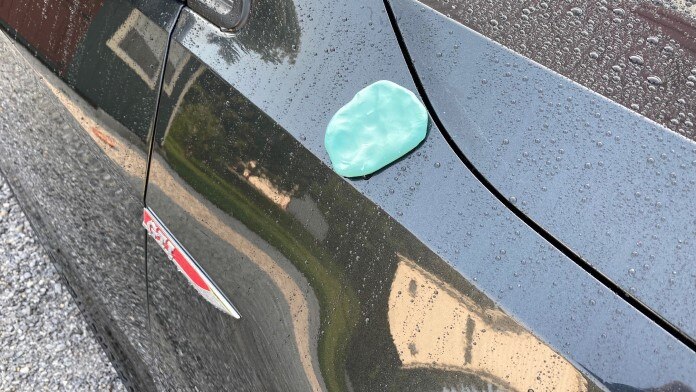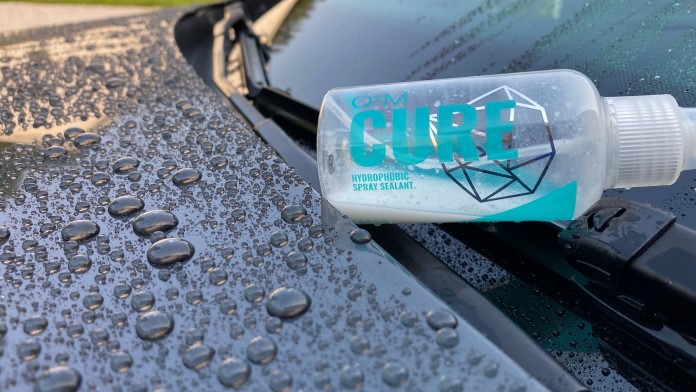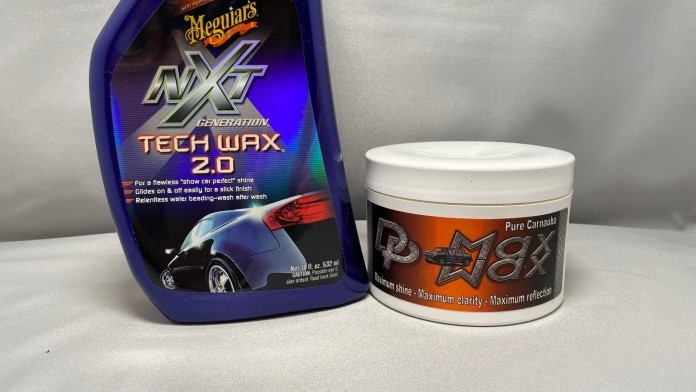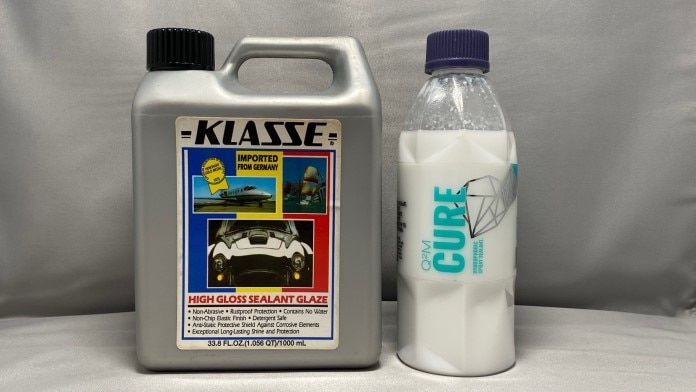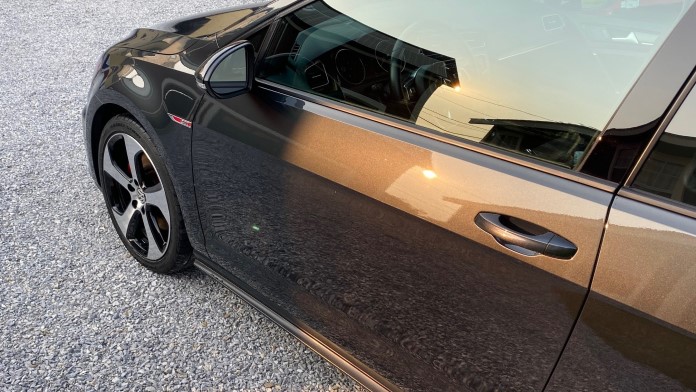When most people think of exterior car detailing, the old-fashioned “wash and wax” comes to mind. Today’s drivers who know better realize much more goes into detailing a car’s exterior like the pros. For example, carnauba car wax following a hand wash was the go-to form of paint protection for decades. That standby has given way to paint sealants and ceramic coatings in recent years.
An often forgotten or unknown action is using a clay bar to deep clean paint and remove bonded contamination before adding a new layer of paint protection. And while the clay bar is excellent for wholly and safely removing surface contamination, chemical decontamination is necessary to remove the contamination embedded beneath the paint’s surface. Using an iron removal product will help remove brake dust from the color before it can blossom into unsightly rust blooms.
Read on to learn about the steps for professional exterior car detailing to help keep your vehicle looking new.
Exterior Car Detailing Explained
Exterior car detailing consists of three main steps: cleaning, decontaminating, and protecting the car’s finish. Advanced car detailers or enthusiasts seeking a showroom shine sometimes choose an additional step to improve the paint’s clarity. They may perform a paint correction to remove scratches, swirl marks, and etchings from the car’s paint. At this point, you may ask yourself, how long does car detailing take?
- Cleaning Car Paint
- Decontaminating Car Paint
- Protecting Car Paint
- Exterior Car Detailing Instructions and Tips
Cleaning Car Paint
The first step to safely detailing the exterior of a car is to perform a hand wash. Before touching the paint with a wash mitt or microfiber towel, it’s best to presoak the high-impact areas. Rinse the bumpers, rocker panels, and mirrors with a hose or pressure washer. Then apply car shampoo or an all-purpose cleaner to the damp surface. Let the product dwell for a few minutes before rinsing any heavy contamination buildup.
After removing the loose dirt and debris from the paint, the risk of inflicting any wash-induced paint blemishes will be lower. When washing a car’s paint, it’s essential to utilize two buckets and two mitts/towels to help prevent cross-contamination. After cleaning each panel, dip the mitt or towel into the rinse bucket to remove contamination before dipping it in the shampoo bucket and cleaning another panel.
Wash panels in straight-line movements, starting from the roof and finishing with the rocker panels. Using a dedicated wash mitt or microfiber towel to clean the bumpers and rocker panels will help keep even the softest paint looking great for a long time.
Expert Tip: Never wash a car when the surface is hot or in direct sunlight. Most water has minerals and other impurities that can cause water spots if it dries on the paint. In addition to water spots, some chemicals in cleaning products may dry on the paint and leave stains that will require additional effort to remove.
Decontaminating Car Paint
After removing the loose contamination from the car paint, chemical and mechanical decontamination can begin. Much like the presoaking before washing the paint, applying chemical decontamination products to the paint before touching it will reduce the chances of creating paint scratches. After dissolving the iron and tar, it’s time to clay bar the finish to reveal a smooth-as-glass surface.
Chemical Decontamination
Iron and tar removers aren’t cheap and can cost $1 per ounce for some products. The good news is that a little bit goes a long way, and iron and tar removers can provide a deeper clean in a fraction of the time. Using chemicals to dissolve contamination instead of scrubbing them away will minimize the risk of damaging the paint during decontamination.
Iron Remover: Hot microscopic particles of brake pads and rotors embed their way into a car’s paint every time it’s driven. Over time, these ferrous metal particles oxidize and create unsightly orange freckles known as rust blooms.
Tar Remover: Road construction usually means less wear and tear on a car’s suspension but can wreak havoc on the paint. Removing road tar is easiest when it’s fresh and still soft. After the tar has hardened, the chemicals will have a more challenging time penetrating the surface and dissolving the contamination. Tar removal products are also helpful for removing tree sap and sticker adhesive.
Expert Tip: Iron removal products have a strong sulfur smell. Always use iron removers in a well-ventilated area and wear nitrile gloves. Citrus-based tar remover fumes are slightly less noxious, but wearing personal protection equipment is a good practice when using any decontamination product.
Mechanical Decontamination
While chemical decontamination removes most contamination, traces may be left behind. Using a clay bar or synthetic clay to remove specific contaminants like paint overspray is the best method. Clay bars are in three grades: fine, medium, and aggressive. Medium-grade clay is the most common and the right choice for removing bonded contamination from most paint. Fine-grade clay is an excellent choice for a well-maintained paint job that has previously been polished or protected with a ceramic coating. Aggressive-grade clay is usually only suitable for use on neglected paint or cleaning up accidental paint overspray.
Clay Bar: Using a clay bar is an essential step of external car detailing if it’s been more than a year since the last paint decontamination. The material usually comes in 100-gram and 200-gram packages. Bars can be divided into smaller pieces to make handling easier. Another benefit of using smaller amounts of clay is that you won’t need to discard the whole bar if it’s accidentally dropped on the ground. Each clay bar can usually clean a minimum of two cars and even more if they don’t have heavy contamination buildup.
Synthetic Clay: Instead of lifting and trapping the contamination, synthetic clay works by shaving off the contamination off the surface. Multiple grades of synthetic clay are available. Be cautious because fine-grade synthetic clay is closer to a medium-grade clay bar regarding the possibility of it marring the paint. Paint decontamination takes less time with synthetic clay because it doesn’t require kneading after each car panel like a clay bar. Another benefit is the ability to rinse synthetic clay clean if it’s accidentally dropped on the ground.
Expert Tip: Only use detailing clay in straight lines and clean the paint in two different directions. It’s essential to use the clay in both side-to-side and front-to-back motions to remove the most contamination. Always rewash the car after using detailing clay to remove any contamination that was dislodged and remains on the surface.
Protecting Car Paint
Once the paint is contamination-free, applying a layer of car wax or paint sealant is the final step to exterior car detailing. Numerous paint protection products are available, ranging from tried-and-true carnauba wax to high-tech ceramic sealants. Paste waxes and paint glazes will fill in minor paint defects and help enhance the car’s appearance. While paint sealants don’t offer much in terms of filling defects, they do, however, provide extended durability and remarkable hydrophobic properties.
When shopping for a car wax or paint sealant, check if it’s for cleaning or finishing. Paint protection products formulated for cleaning the paint can have mild abrasives or chemicals that help further enhance the paint’s shine and ensure a long-lasting bond. Finishing waxes are abrasive-free and allow multiple layers of protection to be applied to increase the product’s lifespan and reduce the frequency of application. Layering a cleaner wax or sealant isn’t possible since the second coat will remove all or most of the first coat.
Expert Tip: Wash the car wax and paint sealant removal towels separately from the car drying towels to prevent cross-contamination. The drying towels will absorb product from the paint protection removal towels, making them hydrophobic and ineffective at absorbing water.
Types of Car Wax
Car waxes are available in many different formulations. Still, the most significant decision is to apply paste wax or liquid wax. Paste wax tends to fill in minor paint defects better than liquid wax, but the trade-off is the ease of application. Paste wax requires more effort to apply and remove, increasing the time needed for an exterior car detail. In recent years, paste waxes have fallen out of favor except for vehicles competing in car shows or those in collections that don’t see frequent use.
Paste Wax: Paste wax is the original form of car wax and comes in various formulations. Carnauba wax is a naturally occurring substance harvested from a specific type of palm tree. Carnauba is too hard to use in its natural state, and adding solvents softens the wax. More expensive waxes tend to have a higher concentration of carnauba. They can provide extended durability compared to less costly waxes. Paste wax is also available with synthetic ingredients that help improve durability and ease of application.
Liquid Wax: Trading some durability for easier application is one compromise that has helped liquid waxes gain popularity. The time saved applying a coat of liquid wax should be enough to offset the requirement for more frequent application. Liquid wax is available in carnauba and synthetic formulations. Both wax types modify the paint’s appearance and provide a slightly different appearance depending on the formulation. Spray waxes are convenient but the least durable formulation of liquid wax. Expect a spray wax to last only a few weeks compared to a few months.
Types of Paint Sealants
Paint sealants outperform car waxes in many categories, which makes them a popular choice for daily-driven vehicles. Sealants are easier to apply than liquid waxes and don’t leave a white stain on rubber or plastic trim. Some products utilize a convenient wipe-on wipe-off method that reduces application time from upwards of an hour to minutes. Unfortunately, paint sealants have little to no ability to fill paint defects and cannot hide light scratches or swirls.
Polymer Paint Sealant: Most paint sealants will fall into this category since it’s pretty broad and in its original form. Ceramic paint sealants weren’t always available and became more readily available around 2010. Polymer paint sealant formulations will provide an average of four to six months of protection and come in various application types. Spray sealants offer the fastest application in exchange for the ability to fill and hide minor paint defects.
Ceramic Paint Sealant: Ceramic paint sealants can serve as a standalone product or be applied on top of a ceramic coating to enhance its performance. Sprayable ceramic sealants utilize the wipe-on wipe-off application method. The technique takes only minutes to complete, and quality products provide up to six months of protection. Don’t let the elevated cost of ceramic paint sealants dissuade you. A little sealant goes a long way, and it’s hard to put a price on the enhanced level of paint.
Exterior Car Detailing instructions and Tips
Following a task order for efficiency can help save time when performing an exterior car detail. For example, cleaning filthy door jambs before the rest of the car prevents contamination from dripping onto freshly cleaned paint. Similarly, cleaning the engine bay or restoring headlights first keeps surrounding panels from getting dirty after being cleaned.
- Rinse the tires, wheels, and wheel wells with water.
- Apply wheel cleaner or all-purpose cleaner to previously rinsed surfaces. Agitate the product with various brushes before rinsing.
- Rinse the rest of the car with water.
- Apply car shampoo or all-purpose cleaner to the bumpers, rocker panels, and mirrors. Let the product dwell for a few minutes and rinse off.
- Wash the paint and glass using the 2-bucket method.
- Apply iron remover and agitate with a microfiber towel. Let iron remover dwell for a few minutes and rinse off.
- Apply tar remover and agitate with a microfiber towel. Let tar remover dwell for a few minutes and rinse off.
- Apply clay lubricant to the paint and clay the paint one panel at a time. Fold or rinse the clay when it becomes contaminated.
- Wash the paint and glass using the 2-bucket method.
- Dry the paint and glass using a microfiber drying towel.
- Dry the door jambs and wheels using dedicated towels that will never touch the exterior paint.
- Apply protectant to the tires.
- Polish the exhaust tip/tips.
- Apply the paint protection product of your choice and remove it accordingly.
